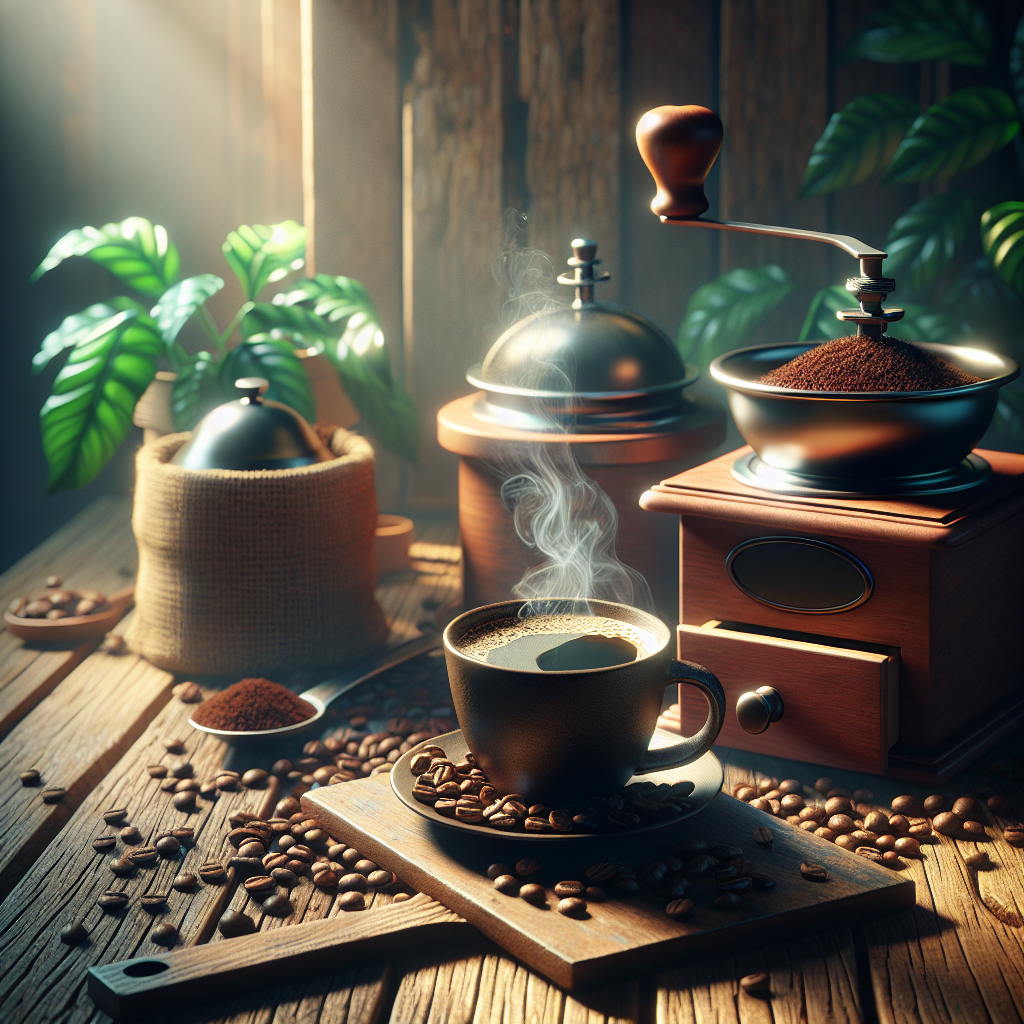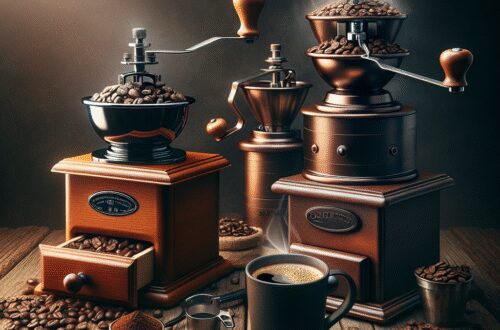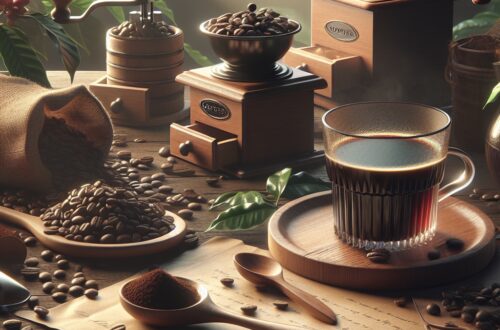“`html
The Ultimate Guide to Making Great Coffee at Home
For coffee enthusiasts who wish to replicate the exceptional experience of a coffee shop from the comfort of their home, making great coffee involves more than just pushing a button on a machine. In this comprehensive guide, we’ll break down the entire process into detailed steps that will help you understand the nuances of brewing a perfect cup of coffee at home.
Popular Coffee Brewing Methods
| Brewing Method | Flavor Profile | Required Equipment | Time Investment |
|---|---|---|---|
| Pour-Over | Crisp, clean taste with clarity | Pour-over dripper, paper filter, kettle | 4-5 minutes |
| French Press | Rich, full-bodied flavor | French press, kettle | 4 minutes |
| Cold Brew | Smooth, mild flavor with low acidity | Cold brew maker, coarse coffee grounds | 12-24 hours |
| Espresso | Strong, bold taste with crema | Espresso machine, coffee grinder | 25-30 seconds |
| AeroPress | Versatile, concentrated flavor | AeroPress, kettle, filters | 1-2 minutes |
Selecting High-Quality Beans
Importance of freshly roasted beans for best flavor: High-quality, freshly roasted whole beans can significantly enhance your coffee experience. Look for specialty coffee roasters or local shops that offer various origins and blends.
Understanding the origin and blend of beans: Different coffee beans have distinct flavor profiles depending on their origin. Trying different beans from various regions can help you find your preference.
Avoid pre-ground coffee, as it loses flavor quickly after grinding. Instead, buy whole beans and grind them just before brewing to maximize freshness.
Investing in a Good Grinder
Pros and cons of burr grinder vs. blade grinder: A burr grinder is recommended over a blade grinder due to its ability to produce a consistent grind size, which is crucial for even extraction during brewing.
Grinding coffee only before brewing for optimal freshness: Grind only the amount of coffee you need just before brewing to ensure maximum freshness and flavor.
Using the Right Coffee-to-Water Ratio
The ideal coffee-to-water ratio for balanced flavor: Aim for a coffee-to-water ratio of approximately 1-to-16. This means using 1 part coffee to 16 parts water. For example, if you’re brewing 300ml of coffee, use about 18g of coffee.
Measuring coffee and water accurately can help achieve a balanced brew. Adjust the ratios for a stronger or weaker coffee according to your taste preferences.
Experimenting with Brewing Methods
Explore different brewing techniques to find your preference. Methods such as pour-over, French press, and cold brew each offer unique flavors and experiences. Consider trying each method to understand how they differ. Each method requires specific equipment and varies in preparation time and complexity.
Measuring Water Temperature Carefully
Ideal brewing temperatures: Boil your water and let it cool for about 30 seconds to a minute before pouring it over the coffee grounds. Ideal brewing temperatures range from 195°F to 205°F (90°C to 96°C) to extract the best flavors.
Using a thermometer can help maintain the right temperature, ensuring consistent and flavorful coffee each time you brew.
Storing Coffee Properly
To preserve your coffee’s freshness, store it in an airtight container in a cool, dark place. Avoid storing coffee beans in the refrigerator or freezer, as moisture can lead to stale flavors. Proper storage helps maintain the beans’ flavor over a longer period.
Utilizing Filtered Water
The quality of your water can significantly affect the taste of your coffee. Use filtered or bottled water to brew your coffee, as chlorinated tap water can introduce unwanted flavors and aromas. Choosing the right water can enhance the overall flavor and aroma of your coffee.
Understanding Grind Size
Different brewing methods require different grind sizes. Use a coarse grind for French press, medium for drip, and fine for espresso. Adjusting your grind depending on the method can help avoid bitter or weak coffee. Grind size is a critical factor in determining the flavor and strength of your coffee.
Tasting and Adjusting
Techniques for tasting and evaluating coffee: As you brew, take notes on your coffee’s flavor profile, acidity, and strength. Don’t hesitate to make small adjustments to grind size, brewing time, and coffee ratios to create your perfect cup.
Keeping a coffee journal can help refine your brewing process and identify the best combinations of factors for your taste preferences.
Enjoying Mindfully
Take the time to enjoy your coffee experience. Savor the aroma and flavors, and experiment with add-ins like milk or spices to customize your brew. Creating a ritual around coffee preparation and consumption can enhance your overall experience and help you appreciate the nuances of different coffees.
By following this detailed guide and paying attention to each step, you’ll be able to make a truly great cup of coffee at home. Each of these components plays a vital role in the overall coffee experience, and mastering them will elevate your home-brewing from good to exceptional.
Ready to dive deeper into the world of coffee? Explore more tips and FAQs here.
“`
Shop at Breville now!
https://breville.oie8.net/oqDqrE
Shop Coffee Machine at Amazon now!
Click here!





